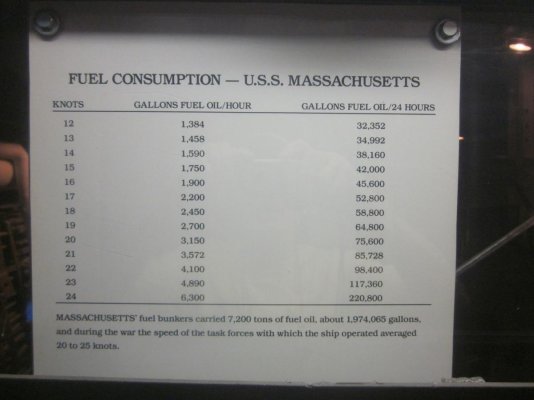JDCAVE
Guru
- Joined
- Apr 3, 2011
- Messages
- 2,905
- Location
- Canada
- Vessel Name
- Phoenix Hunter
- Vessel Make
- Kadey Krogen 42 (1985)
An interesting discussion, for sure! I did a few theoretical calculations for the KK42 at different loads: the oft quoted 39,500 displacement and with a full fuel load (760 ,gallons diesel at 7.1 lbs and 350 gallons of water at 8.3 lbs for 47,800 lbs displacement). FWIW I found this article by Charles Doane, "A Better Way to Estimate Hull Speed"...
CRUNCHING NUMBERS: A Better Way to Estimate Hull Speed
I'm not saying Charles Doane's model is correct or not, only that this is what I used to calculate the "Maximum Speed to Length Ratio" (MSL) where the value 1.34 is often quoted.
First, I was able to replicate Charles Doane's model for the 28 foot vessel. Note that he didn't provide the detailed calculation for the displacement to length ratio (DLR). DLR is calculated by dividing a boat's displacement in long tons (2,240 pounds) by the cube of one one-hundredth of the waterline length (in feet).
The example in Charles Doane's article is for a 28' vessel of 12,000 lbs. The displacement to length ratio, DLR is 244. Max S/L ratio = 8.26 ÷ D/L ratio raised to the power of 0.311 which is 1.49.
Assuming the KK42 LWL is 40' (a guesstimate) at the oft quoted 39,500 lb displacement the MSL would be 1.439 and the nominal hull speed would be 9.1 knots. at the 47,800 lb displacement, the MSL would be 1.356 and the nominal hull speed would be 8.6 knots. I had seen somewhere that the 39,500 lb displacement is for a half load, in which case the full load would only be 43,700 and the MSL would be 1.395 and the nominal hull speed would be 8.8 knots.
While the above is interesting, and perhaps relevant if you are designing a vessel, the findings of Larry and Richard are more important to me, and are similar to the findings for my KK42: I'm getting about 1.8 gallons per hour at 1,800 rpm and 7.5 knots without the paravanes in the water. Richard's findings suggest I'd be saving money by dropping half a knot and running at 1,600 rpm. I don't thinkl many of us on the forum are running around at the calculated nominal hull speed. I think I was able to get up there with the throttle at full stop during the sea trial when I had an offer on the boat last spring.
Jim
CRUNCHING NUMBERS: A Better Way to Estimate Hull Speed
I'm not saying Charles Doane's model is correct or not, only that this is what I used to calculate the "Maximum Speed to Length Ratio" (MSL) where the value 1.34 is often quoted.
First, I was able to replicate Charles Doane's model for the 28 foot vessel. Note that he didn't provide the detailed calculation for the displacement to length ratio (DLR). DLR is calculated by dividing a boat's displacement in long tons (2,240 pounds) by the cube of one one-hundredth of the waterline length (in feet).
The example in Charles Doane's article is for a 28' vessel of 12,000 lbs. The displacement to length ratio, DLR is 244. Max S/L ratio = 8.26 ÷ D/L ratio raised to the power of 0.311 which is 1.49.
Assuming the KK42 LWL is 40' (a guesstimate) at the oft quoted 39,500 lb displacement the MSL would be 1.439 and the nominal hull speed would be 9.1 knots. at the 47,800 lb displacement, the MSL would be 1.356 and the nominal hull speed would be 8.6 knots. I had seen somewhere that the 39,500 lb displacement is for a half load, in which case the full load would only be 43,700 and the MSL would be 1.395 and the nominal hull speed would be 8.8 knots.
While the above is interesting, and perhaps relevant if you are designing a vessel, the findings of Larry and Richard are more important to me, and are similar to the findings for my KK42: I'm getting about 1.8 gallons per hour at 1,800 rpm and 7.5 knots without the paravanes in the water. Richard's findings suggest I'd be saving money by dropping half a knot and running at 1,600 rpm. I don't thinkl many of us on the forum are running around at the calculated nominal hull speed. I think I was able to get up there with the throttle at full stop during the sea trial when I had an offer on the boat last spring.
Jim
Last edited:

